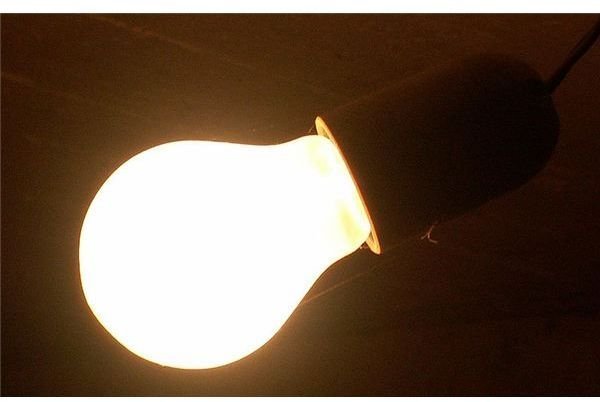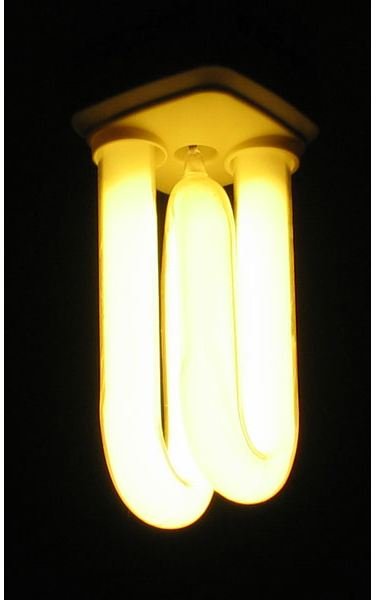Mercury Exposure in Light Bulbs that Break---Know the Air Contamination Hazards
Why Do Government Authorities and Environmentalists Recommend CFL Bulbs?
The Environmental Protection Agency (EPA), the environmentalists has promoted the use of the Compact Fluorescent Lamp or CFL bulbs, as the most economical alternative to incandescent lighting. The Energy efficiency of CFLs is one hundred percent true and certified by the EPA’s Energy Star department. However, many people are nervous about the dangers from mercury exposure in CFLs.
It is true that CFL bulbs contain mercury and have to be disposed of by dropping off at a waste collection site. However, breaking a bulb will not harm the average person. Exercise caution when cleaning up, and do not use a vaccuum as this can spread fumes. Instead open a window and clear the room of pets and children before cleaning up the waste carefully.
Why are CFLs recommended in the first place?
-
CFLS are more energy efficient and contain only 1.8 mg of mercury.
-
CFLs consume only 13 watts as opposed to the average 60 watts for incandescent bulbs.
-
Both CFLs and incandescent bulbs have 8000 hours of use but CFLS use only 104 kWh while incandescent lighting consume as much as 480 kWh.
-
Because incandescent light bulbs use more electricty, they can actually be responsible for just as much if not more mercury emissions, as mercury is released at electrical power plants used to power the bulbs.
-
However, the most notable of all is the landfill contamination by which each type of bulb is capable. It is zero for incandescent bulbs while CFL is capable of 0.6 mg contamination.
Is it Dangerous?


Exposure to mercury is dangerous because the toxic emissions can enter the human body through inhalation and skin absorption and cause some form of neurological disorder. Depending on the amount of exposure, the effects of mercury in the body can be anything from muscular spasms, seizures, hallucinations or delirium.
All bulbs should be handled properly and carefully, although, extra diligence should be exercised in disposing of CFLs because 0.6 mg of its original 1.8 mg content remains intact inside the bulb. This much can still contaminate the atmosphere should the bulbs break while still being transported or left lying in open landfills.
Accidents do happen and everyone should exercise due care whether it’s a CFL or an incandescent bulb. However, the EPA has determined that the benefits of CFLs outweigh the drawbacks. They are considered safe for anyone to use. If one does break, clear the room and air it out by opening a window. Clean up the debris and seal in a plastic bag or jar for disposal. For more information, read this page.
For information on where to find the CFL recyclers nearest your location, visit the EPA’s webpage for “Mercury-Containing Light Bulb (Lamp) Collection and Recycling Programs Where You Live” or use Earth911’s online tool to find one.
What to Do in Case of Bulb Breakage and How to Dispose CFL Bulbs?

The point by point comparisons will show that CFLs still have its advantages; the only problem left to contend with is their manner of disposal once they form part of the consumers’ trash.
Consumers are therefore advised to observe the disposal and clean-up guides furnished by the EPA’s Energy Star, under the publication entitled : Clean-Up and Disposal Guidelines.
For information on where to find the CFL recyclers nearest your location, visit the EPA’s webpage or use Earth911’s online tool to find one.
Reference Materials and Image Credit Section
Reference Materials:
- https://www.energystar.gov/ia/partners/promotions/change_light/downloads/Fact_Sheet_Mercury.pdf
- https://www.nhne.org/news/NewsArticlesArchive/tabid/400/articleType/ArticleView/articleId/2930/language/en-US/New-CFL-Light-Bulbs-Are-Toxic.aspx
- https://www.livestrong.com/article/121922-health-dangers-white-energyefficient-light/#ixzz121dudPpH
- https://www2.epa.gov/cfl/cleaning-broken-cfl#instructions
Image Credits:
- https://commons.wikimedia.org/wiki/File:EnergySavingLightBulb.jpg
- https://commons.wikimedia.org/wiki/File:HK_Central_Peel_Street_light_bulbs_night.JPG
- https://upload.wikimedia.org/wikipedia/commons/thumb/1/14/Incandescent_light_bulb
- https://commons.wikimedia.org/wiki/File:Recycling,_Holywood_Exchange,_February_2010.JPG
